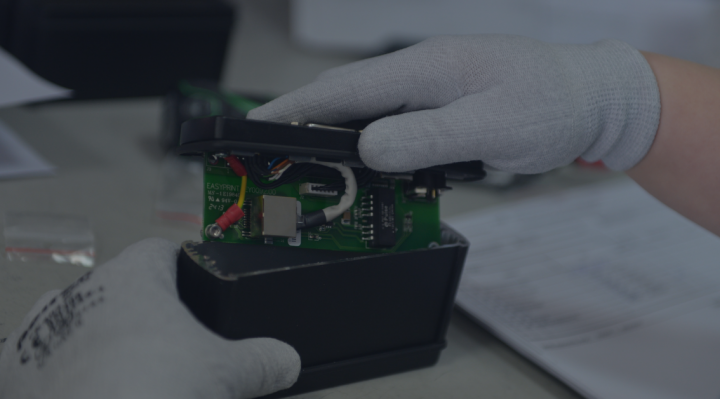Even in the best designed and managed production system, whether it is electronics assembly or any other branch of industry, an (un)expected problems may arise. Far more important than the occurrence of such a situation is how quickly the organization detects it, identifies and implements corrective actions that will quickly resolve the current crisis and develop appropriate countermeasures for the future. Therefore, planning for failure is one of the most important issues that a good EMS should take care of.
Process improvement tools
The sooner problems are identified and potential defects eliminated, the lower the risk of incurring the cost of late-stage corrections, unplanned losses, product returns from the market, the scale of end-customer dissatisfaction, as well as OEM reputational damage caused by a defective product release to the market. Therefore, planning for failure is an important area.
There are proven process improvement tools that, when properly implemented by EMS, play a key role in identifying, correcting and eliminating a wide range of manufacturing problems that electronics assembly may encounter.
FMEA analysis
FMEA method (Failure Mode and Effect Analysis) is based on the identification of defects, allows you to assess the consequences and identify the cause of the error. It is a preventive method that allows you to prevent defects by implementing corrective solutions and systematic process control. It is a continuous improvement method, because through subsequent product or process analyses, it defines risks and threats after the implementation of corrective actions and helps to check their effectiveness.
FMEA analysis can be used for very complex processes, both in mass and unit production, being a universal tool for EMS, which provides a wide range of services to its OEMs.
There are two types of FMEA analysis – product and process.
Product optimisation
It can be implemented at various stages:
- already at the design stage, using the best moment for analysis, when it is possible to achieve the best results thanks to the ease of introducing changes to the product,
- before putting it into production, although here there are fewer opportunities to correct the product, due to the limitations imposed by the prepared product design,
- later stages – little effects due to the fact that almost all parameters have already been established.
Process optimization (Process FMEA)
It is possible in the case of:
- implementation of a new process – it happens very rarely in the company, being at the same time the best moment to undertake such actions,
- improvement of the existing process – still very effective because process improvement is much more flexible than product improvement.
The 8D Methodology
8D report provides a systematic and structured way of solving problems and documenting them easily. The efficiency and relative ease of use of this process have made it one of the most popular quality management methodologies. Electronics assembly uses it successfully, as do other manufacturing sectors, from the automotive industry to aerospace.
The name of the method refers to 8 steps, the following of which allows, through a comprehensive approach, to identify the cause of a problem occurring in the company and implement effective measures to prevent its recurrence.
Steps of the 8D method:
1D – Working group
Set up a team of professionals after a problem has been identified (by the employee or customer). The team will be responsible for implementing the individual steps of the 8D procedure. Working group members should have a good understanding of the product and its processes, and have the competencies necessary to identify the problem and implement sustained corrective and preventive actions.
2D – Problem description
The formed team proceeds to describe the problem precisely and to determine what consequences it has for the customer. When characterising the problem, use measurable terms such as: who? what? where? how? and to separate symptoms from the real problem.
3D – Immediate action
Take actions to prevent further escalation of the problem, continue the production of non-compliant products or the arrival of defective products to the customer by stopping production or shipment, ordering additional control or informing the customer about the detected problem.
4D – Root causes
Next, the problem description should be checked (and updated if necessary) and all the statistical data collected should be analysed to detect the real causes of the problems (root causes). To identify them, you can use e.g. risk analysis, Ishikawa diagram or Pareto method.
5D – Corrective actions
Once the actual sources of the problems have been identified, several alternative solutions can be developed. They should then be evaluated in terms of cost and ease of implementation and impact on the customer. Examples of activities include introducing an additional control in the process or introducing an additional step, such as a test.
6D – Verification of the corrective action
That is, checking the effectiveness of implemented actions, using, for example, laboratory tests, statistical analyses, engineering measurements or test results. Efficiency assessment should be based on hard data.
7D – Preventive actions
Planning preventive actions to eliminate the risk of the problem reoccurring. The activities specified in this point should ultimately replace the preventive actions defined at the 5D step. Such actions may be a change of process parameters, a change of technology or a modification of organizational procedures.
8D – Summary
Preparation of a report that will be a summary of the work with the 8D method. The key element of the document should be the effectiveness assessment of the introduced actions, made by comparing the description of the problem with the current state.
The 5 WHY method
The 5 WHY method is a problem solving practice. The 5 WHYS means asking the WHY question as many times as necessary to cut through all the apparent answers and get to the root cause of the problem to prevent it from occurring again.
The 5 WHYS are used during process analysis and optimisation, as well as action planning. It is often used in combination with other analytical tools, such as cause and effect diagrams, but can also be used independently. The 5 WHYS are most effective when the answers come from people who have practical experience of the process under investigation and have a good knowledge and understanding of it.
The implementation of the 5 WHYS method works well in virtually every company or organization, which is why an electronics assembly at a good EMS cannot do without the use of this methodology.
The 5 WHYS analysis involves the following steps:
1. Gather as much information as possible about the problem
The more information you can gather, the more chance you can identify the real cause of the problem. It is important to consider what actually happened, when the problem occurred, the scale of the problem and the risk it poses.
2. Creating a team of employees
It should include people from different departments, this will maximize the likelihood of a completely objective view of the problem that has occurred. A team selected in this way increases the chance of a quick and effective removal of irregularities."
3. Overview and description of the problem
This will help determine the extent of the problem to be investigated.
4. Asking the WHY question
The person appointed as the leader will ask questions. The answers must be based on facts and real data, not on opinions and emotions. The leader can ask an unlimited number of questions that will be helpful in finding the root cause of the problem.
5. Solving the problem
If the root cause of the problem has been found, it is time to take corrective actions. The discussion with the team should end with planning the steps for implementing the recovery plan. The implementation of appropriate activities requires subsequent control, drawing conclusions and checking whether the planned and used activities actually had a positive impact and whether they brought measurable benefits.
Electronics assembly, its success with any electronic or electromechanical product is an action taken ahead of time – depends on a reliable and consistent quality control approach that reduces the risk of defects and focuses on providing the best customer service possible. The proactive attitude of the EMS in this respect includes planning for failure, which allows us to predict and eliminate potential failures with the use of a number of analytical tools. This is a challenging task that often involves a quality assurance team with knowledge and experience of the tools that form the basis of process improvement.






